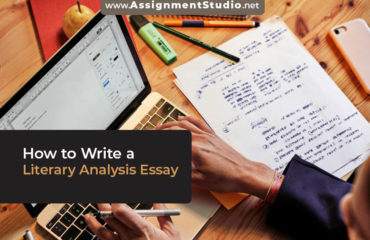
Table of Contents
Introduction
You may have learned multiple formats and methods of writing but have you ever heard about MEAL writing? After reading a title there may be various questions in your mind like What is a meal paragraph? What is a meal writing plan? And why should one use this format? In this article, you will find all your answers, and some examples are also quoted for your better understanding.
Think for a while, what could be the main objective of an academic writer? Yes, you are right it is communication, in fact, you are more right it is clear and precise communication. You may have observed some papers and essays that do not contain a logical flow and this has a direct impact on the clarity of arguments and precision.
To continue the flow of your content you should divide the main argument into further specific categories and write paragraphs accordingly. You being a writer try to ease the reader, he or she could comprehend the written material in a good manner that what the writer is trying to communicate.
In this context, the MEAL paragraph format is much more effective. This writing plan was developed in the “Thompson Writing Program” at Duke University. This writing plan was introduced to manage the student’s materials.
So now without wasting further time, let’s understand it.
What does MEAL stand for in writing?
The abbreviation MEAL stands for the main idea, evidence, analysis, and link. If you are writing a meal paragraph you have to follow this sequence.
This is the formula that will help you to continue the sense or flow of your content. It starts with the main idea and you can call it the central argument. After it, you need to provide proof or evidence in accordance with your main idea. Once it is stated, now elaborate on your evidence and provide further investigation so that the reader may catch it easily. In the end, you have to relate your evidence and analysis to your main idea. It is like you are adding small chunks to make a broader image.
After completing the whole procedure, you will observe a chain of information. You can see how beautifully the information is presented to a reader.
M: Main Idea
Have you ever read the thesis statement? Basically, in research writing a thesis statement contains the main issue on which a researcher is doing research. Similarly, the essay paragraph also follows the same strategy. However, all the paragraphs in an essay contribute to the one main idea which is the topic. Your paragraphs should reflect the main idea: either the first line or the second does not matter but should relate to the topic.
The concept of the MEAL paragraph is not a hard and fast rule. You must take it as a guideline whether you follow it or not. As it was designed to help students to revolve around the main idea. And accordingly, you must be clear about the main idea, if you do not understand the main idea how you are supposed to write about it.
E: Evidence
The evidence is when you quote someone’s data or information in order to support your main idea. Note in this context if you are providing some hypothetical information then it would not be considered evidence. The evidence means a properly paraphrased text along with a citation. Wow, MEAL writing has just specified the referencing and citation part. You can only mention the source in the evidence part.
In other words, all your claims in your written content in contrast to the main idea need a reference. Including journal articles, books, digital media, interviews, etc. can be your evidence.
A: Analysis
Before providing an analysis first read your evidence and topic sentence carefully. If you think your evidence needs some explanation then go for analysis. Normally, the topic sentence and evidence used are interrelated and do not need further explanation or analysis.
Again, this is not a hard rule but it’s a broader approach that shows how you are presenting the other’s work along with creative touch. In academic writing, things do not always work in a specific order. For instance, in a research journal or article, there is some kind of ambiguity between evidence and analysis. Because multiple sources are used in the paper, it becomes tough to differentiate between evidence and analysis.
Apart from these concerns, it is recommended that you try to use the MEAL paragraph for clarity purposes. If you are clear on this point then it’s fine. Otherwise if you go deep in the process of writing, your flow of content be disturbed.
L: Link
The last one or two lines must be linked with a central argument. This could be the main part that maintains the logical flow of your content. In every paragraph where you state any claim about the main idea a strong connector or linking explanation is needed. Linking each paragraph is not so easy. You need a proper explanation if you fail to show the connectivity it will annoy the reader. The reader will perceive it as irrelevant information.
In this context, there might be a question that arises in your mind. You may be thinking that it is so necessary to link each paragraph with the main idea. However, your target audience who are mainly the readers is much more intellectual and smart to understand your argument from a topic sentence.
You may be right but here the concern is “flow” if you do not link your paragraphs to the main idea, the reader will think it is irrelevant, it will sound rough, and also like different examples are collected from various sources. Even due to this sometimes readers forgot what the actual topic is. I guess you have now understood the importance of linking your claims to the main idea.
This practice is much more needed in journals and articles where multiple sources are used to highlight a single piece of information. If there you did not show the link to the main idea the reader may not comprehend it in a good manner.
You have now learned the procedure of MEAL writing and you got the idea that you have to mention a link for the reader to differentiate between the paragraphs but the reader must reach the main idea or the central argument
Example
Here is an example for your better understanding. You can read and observe how all the components are mentioned in a specific order and flow. You can start it with the main idea of how he or she had started it and provide the evidence. In this example observe how the writer thought that there must be a little bit of analysis of his or her claim. In the end you can see how beautifully it is connected or linked with the main idea.
Conclusion
This is one of the best strategies for academic writers. Most writers do not know about the flow and also do not focus on the clarity of the argument. You may have observed it in various contents. But today you have learned the complete concept of MEAL paragraphs. Now you have understood both sides of a coin. How the writer should explain and support his or her claims and also how the reader can perceive the information. We hope you found this information helpful.








